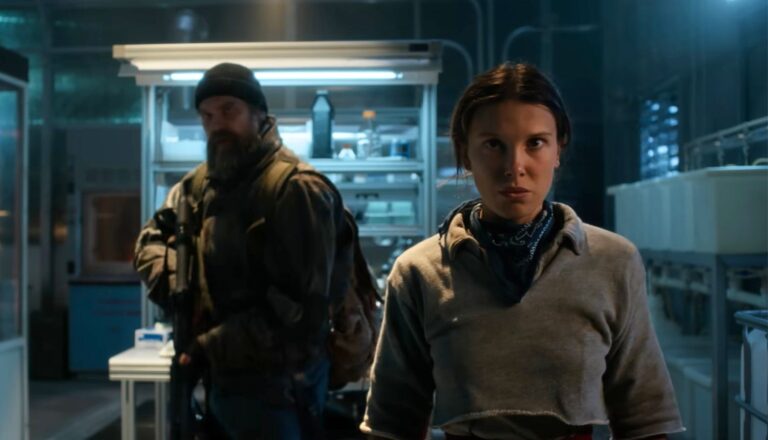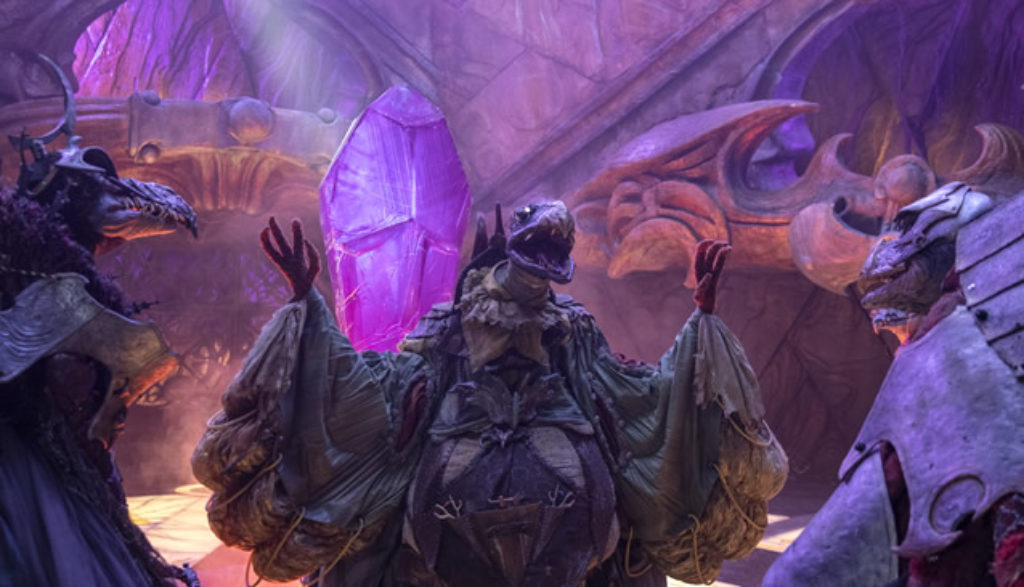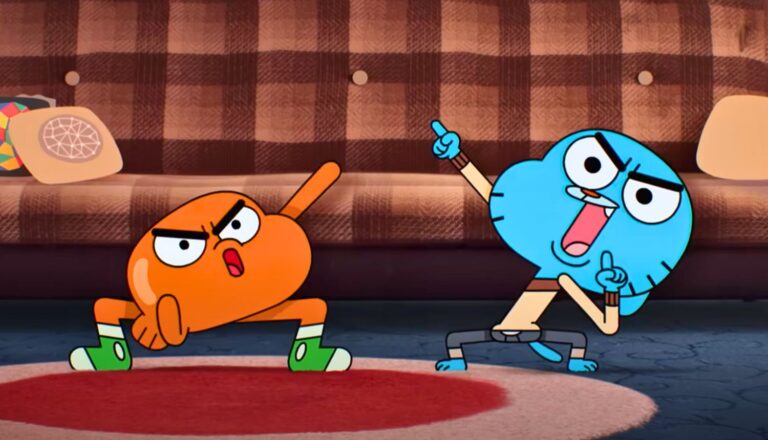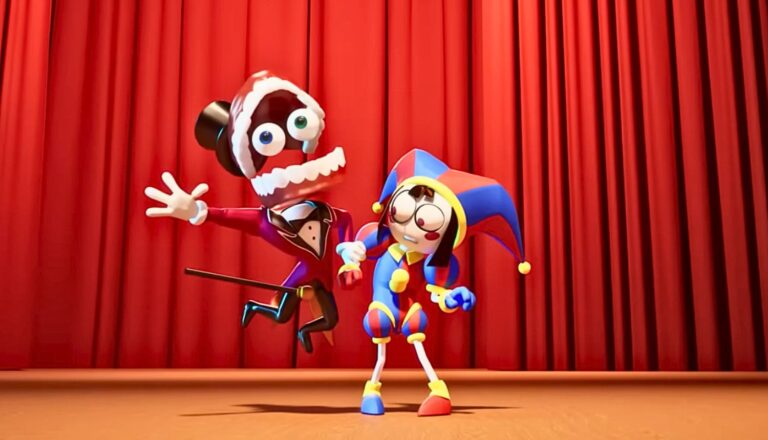
Stranger Things
The newest season of Netflix’s Stranger Things continues to blend ’80s nostalgia with ever-darker spiritual content and horrific violence.

It was another world, another time, in the age of wonder.
Well, if 1982 counts as an age of wonder. And perhaps, in a way, it was. Harrison Ford was chasing replicants in Blade Runner. Arnold Schwarzenegger was flexing as Conan the Barbarian. William Shatner was shouting “KHAAAAN!” And Jim Henson—best known for his adorably hilarious Muppets, such as Kermit the Frog, Miss Piggy and Big Bird—had turned his attention to something wholly other.
The Dark Crystal was unlike anything Henson had done before. Through his puppetry, he and his team created a dark, brooding fantasy world filled with wise Mystics, evil Skeksis and a couple of plucky Gelflings—apparently the last of their race. This world, called Thra, was so strange and unsettling that, honestly, not many saw it. When The Dark Crystal opened, most families went to see E.T. the Extra-Terrestrial for a third time instead. The Dark Crystal took its mixed reviews, made its $40.6 million and seemed destined to fade into obscurity.
But, of course, it didn’t.
Many now consider The Dark Crystal to be a fantasy classic. And that, naturally, makes it ripe for a 21st-century revisit—this time not as a movie, but a Netflix series.
The Dark Crystal: Age of Resistance opens sometime before the events of the original Dark Crystal movie. Instead of being near extinction, the Gelflings make up a thriving civilization, with seven “clans” filling various geographical and vocational niches. One forest-dwelling group, for instance, specializes in fighting. Another tribe lives underground. The Vapra clan populates a beautiful, thriving city and rules over the rest.
If these clans seem rather socially restrictive, well, the Gelflings have bigger concerns. The titular crystal—the multifaceted embodiment of Thra itself—has been corrupted by those evil Skeksis, and it’s beginning to infect the planet’s plants and animals in disturbing ways. It’s also not serving to keep the Skeksis forever young (or at least alive) like it used to.
That proves to be doubly bad news for the Gelflings: See, the Skeksis soon learn that the corrupted crystal can still do one thing: Extract the “essence” (think liquid life force) out of pretty much anything alive and breathing. Naturally, the procedure kills its subjects; but if a Skeksis should drink that fresh-squeezed essence, it’ll make the imbiber younger. And the Skeksis have ambitions of living forever.
The Gelflings won’t just hand over their essence to just any needy Skeksis, though. They’re actually quite attached to the stuff. And that means that (once the Gelflings learn about the Skeksis’ dastardly plans) a rebellion is in order. And it seems to have fallen to three of them—feisty Rian (whose girlfriend was one of the crystal’s first victims); the bookish Brea; and the creature-lover Deet—to stir the pot. And they just might get a little help from Aughra, Thra’s astronomer extraordinaire, to boot.
In creating Age of Resistance, it must’ve been tempting to scrap 20th-century puppetry and resort to CGI to craft Thra and all of its fantastical inhabitants. And while you’ll see some computer-generated images now and again, the characters here are the same sort of puppet/marionette/costume creations that Henson utilized nearly 40 years ago. That gives Age of Resistance a certain level of authenticity and retro charm (even if the CGI spectacles we’ve grown so used to today make the puppets look a little more like, well, puppets).
Netflix didn’t skimp on voice talent, either. Everyone from Helena Bonham Carter and Lena Headey to Mark Hamill and Simon Pegg adds their literal voices to the mix—with Sigourney Weaver serving as the narrative Myth Speaker.
The show, like its 1980s predecessor, stays reasonably family friendly—at least in terms of the specific content we see. Romance may be in the air, but these puppets aren’t going all Happytime Murders on us. Few, if any, bad words on our planet have migrated to the land of Thra. And while the show is predicated on the killing of innocent Gelflings (as well as the growing rebellion in response to those murderous acts), the violence is not particularly bloody.
But while all that’s great, Age of Resistance is hardly a slam dunk, especially for families with young would-be viewers.
The world of the Dark Crystal isn’t that gory, but it can be gross. The Skeksis have terrible eating habits, and when they catch a cold … well, let’s just say everything around them gets rather gooey. The show can be pretty scary, too. Just standing still, the Skeksis might trigger nightmares. And when they actually start perpetrating their duplicitous, selfish deeds, they’re so much worse. Gelflings often find themselves in deeply perilous situations, and there’s no guarantee that they’ll all survive.
Moreover, while Thra doesn’t seem to have a well-articulated system of faith, there’s an undeniable tang of spirituality here, trending a bit toward the worship of nature. Deet speaks to a powerful and near-sacred “sanctuary tree.” The crystal—the beating heart of the planet itself—is practically worshiped by the Skeksis, even as it’s used as a tool. And Aughra not only tracks the stars and the planets, she uses them to divine the future. Gelflings can surf through each other’s memories at times, too, and perhaps even see glimpses of the future.
The Dark Crystal: Age of Resistance is unquestionably ambitious. And it’s sort of show that might allow parents who enjoyed the original movie to introduce this franchise to their kids to Henson’s strange, compelling fantasy. Netflix seems to have taken pains to facilitate such cross-generational viewing. But while this show, like the crystal itself, has many facets, not all of them shine quite so brightly.
(Editor’s Note: Plugged In is rarely able to watch every episode of a given series for review. As such, there’s always a chance that you might see a problem that we didn’t. If you notice content that you feel should be included in our review, send us an email at letters@pluggedin.com, or contact us via Facebook or Instagram, and be sure to let us know the episode number, title and season so that we can check it out.)
In the opening episode, we’re introduced to Thra’s backstory. We learn how the Skeksis (who came, it seems, from another planet) distracted Aughra, Thra’s traditional protector, with astronomical principles and offered to be stewards of Thra’s crystal (and the castle it sits in) in her stead. Now they rule over a land largely populated by Gelflings.
But in some corners of Thra, a few Gelflings realize that not all is right with the land. Deet, who comes from a civilization of underground Gelflings, is told by a massive talking tree that the land’s been corrupted by a “darkening.” Brea, one of the Gelflings’ ruling class, has a mysterious vision (and discovers that her own mother has made ethical compromises to the Skeksis). And Rian, a soldier serving in the Skeksis palace, watches as his overlords kill his girlfriend and drink her essence.
Rian is horrified by his girlfriend’s death—and younger viewers might be as well (even if her body simply disappears in what looks like wafts of purple smoke). Another character is nearly consumed in the same way. The Gelflings (along with another friend of theirs) charge through the castle on the hunt for a dangerous (and scary-looking) spider-like creature. Another creature attacks Deet unexpectedly, sending her scurrying through a tunnel. A library is torn apart by mysterious forces.
Skeksis try to absorb life-sustaining rays from the crystal. The ceremony has no effect, but it still looks vaguely worshipful. Gelfling “tithe” to their Skeksis masters. Theoretically, those gifts are given voluntarily, but Skeksis actions prove otherwise. A Skeksis is suffering from a severe cold: The sticky mucus that oozes from her nostrils is meant, I think, to be a running gag … but it just made me want to actually gag. (We hear a reference to “belching,” too.) Gelflings steal food from a cart meant for Skeksis consumption. Two Gelflings kiss.
Deet lives in a close-knit community/family that may be headed by what appear to be two men. There’s really no context that confirms that they’re Deet’s “dads” or suggests they’re in a homosexual relationship, but for those particularly sensitive to this issue, it could be interpreted as such.

Paul Asay has been part of the Plugged In staff since 2007, watching and reviewing roughly 15 quintillion movies and television shows. He’s written for a number of other publications, too, including Time, The Washington Post and Christianity Today. The author of several books, Paul loves to find spirituality in unexpected places, including popular entertainment, and he loves all things superhero. His vices include James Bond films, Mountain Dew and terrible B-grade movies. He’s married, has two children and a neurotic dog, runs marathons on occasion and hopes to someday own his own tuxedo. Feel free to follow him on Twitter @AsayPaul.

The newest season of Netflix’s Stranger Things continues to blend ’80s nostalgia with ever-darker spiritual content and horrific violence.

After a seven-year hiatus, the wacky town of Elmore is back, as Gumball and his family embark on even more weird adventures.

The Amazing Digital Circus places its digitized humans under the terrorism of a maniacal AI ringmaster and his chaotic adventures.

The self-centered hedonistic approach of every character in Emily in Paris only seems to increase, and the praises for it are doubled.